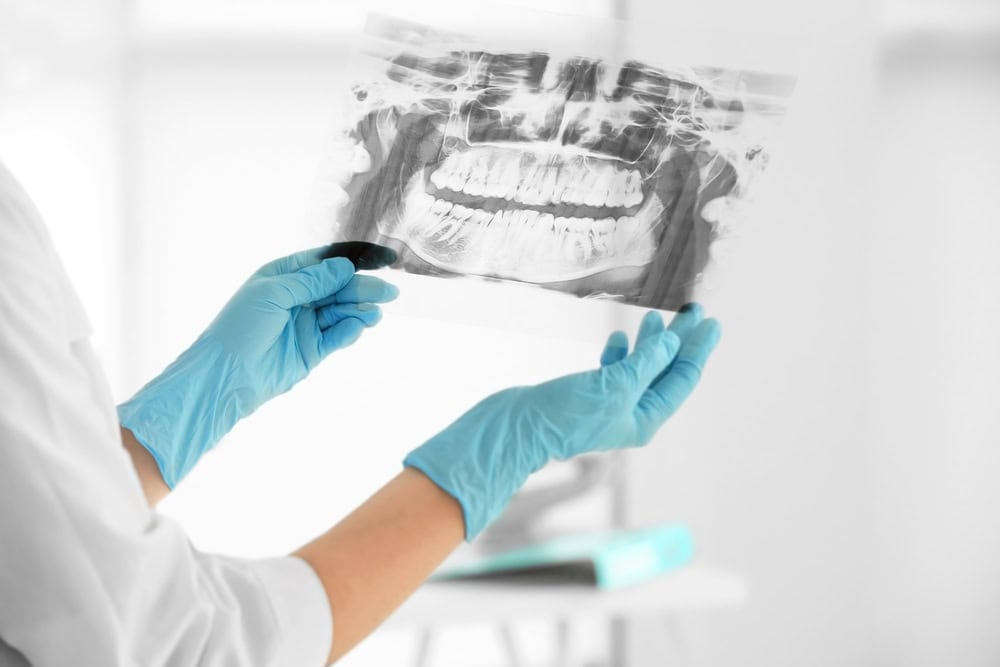In general, a tooth that has become abscessed is one whose underlying pulp (the tooth’s soft core) has become infected or swollen. The pulp contains nerves, blood vessels and connective tissue, and lies within the tooth. It extends from the crown of the tooth, to the tip of the root, in the bone of the jaws. An abscessed tooth can be an extremely painful condition. In some cases, antibiotics are administered in an attempt to kill an infection. If antibiotics are ineffective and an abscess is shown to be damaging the pulp or lower bony structures, a root canal procedure may be needed to remove the dead pulp and restore the tooth to a healthy state.
Emergency Care
What is Emergency Dentistry? Emergency dentistry is a branch of dentistry that focuses on sudden accidents, trauma, and bleeding. An emergency dentist is trained to give immediate, expert care. They are qualified to make a quick diagnosis and treatment. Unlike general dentists who always require appointments, many emergency dentists take walk-ins. What Qualifies as a Dental Emergency? Benefits of Emergency Dentistry What Treatments are Used for Common Dental Emergencies? Depending on the emergency, we have a variety of treatments to keep your teeth bright, fresh, and healthy. Our procedures may include root canal treatment, dental fillings, extractions, irrigations, splinting, reimplantations, and antibiotic therapy. We’ll go through each available process to ensure you have the most effective, comfortable treatment possible. Emergency Dentist in Greenville, NC With emergency dentistry, you never have to worry about your teeth’s safety. Dr. Kevin Holly and our expert team have decades of experience. Contact us today for further information.
Dental X-Rays in Greenville
How often dental X-rays (radiographs) should be taken depends on the patient`s individual health needs. It is important to recognize that just as each patient is different from the next, so should the scheduling of X-ray exams be individualized for each patient. Your medical and dental history will be reviewed and your mouth examined before a decision is made to take X-rays of your teeth. The schedule for needing radiographs at recall visits varies according to your age, risk for disease and signs and symptoms. Recent films may be needed to detect new cavities, or to determine the status of gum disease or for evaluation of growth and development. Children may need X-rays more often than adults. This is because their teeth and jaws are still developing and because their teeth are more likely to be affected by tooth decay than those of adults.
Dental Sealants in Greenville
The pits and grooves of your teeth are prime areas for opportunistic decay. Even regular brushing sometimes misses these intricate structures on the chewing surfaces of your teeth. The sealants are applied to the chewing surfaces and are designed to prevent the intrusion of bacteria and other debris into the deep crevices on the tops of teeth. Sealants actually were developed about 50 years ago, but didn’t become commonly used until the 1970s. Today, sealants are becoming widely popular and effective; young children are great candidates for preventative measures like sealants (especially on molars) because in many cases, decay has not set in. Even on teeth where decay is present, sealants have been shown to fight additional damage. Application Sealants are applied by first cleaning the tooth surface. The procedure is followed by “etching” the tooth with a chemical substance, which allows the sealant to better adhere. After the sealant is applied, a warm light source is directed to the site to promote faster drying. Sealants usually need re-application every five to 10 years.
Periodontal Exams in Greenville
During your periodontal examination, your dentist will check: Gingivitis is the first stage of periodontal disease that causes inflammation of the gums. Dental x-rays can determine if the inflammation has spread to the supporting structures on the teeth so treatment can be started to correct the problem. Periodontitis occurs when gingivitis goes untreated, which makes periodontal exams vital to preventing and putting an end to gum diseases. Your dentist will complete a periodontal exam with each visit, emphasizing the importance of regular, routine visits to your dentist’s office.
Age and Oral Health
National survey reveals baby boomers miss links between oral and overall health Baby boomers looking for the warning signs of adult-onset diseases may be overlooking key symptoms in their mouth that should signal alarms about their overall health. According to a survey commissioned by the Academy of General Dentistry, 63 percent of baby boomers (ages 45-64) with an oral symptom considered to be a key indicator of a more serious health condition, were unaware of the symptom`s link to the condition. Boomers` failure to recognize that oral health holds valuable clues could negatively impact their overall health.
Infection Control
Water Quality and Biofilms Concerns about the quality of water used in a dentist’s office are unfounded, provided the dentist follows the infection control guidelines of the Centers for Disease Control and the American Dental Association. Some health “experts” in recent years have called into question the risks associated with so-called “biofilms,” which are thin layers of microscopic germs that collect on virtually any surface. Essentially, these bacteria and fungi occur everywhere, including faucets in your home; your body is no less accustomed to being exposed to them than in any other situations. In fact, no scientific evidence has linked biofilms with disease. If you have a compromised or weakened immune system, you are susceptible to germs everywhere. Consequently, let our office know if you have such a condition so additional precautions, if any, can be taken.
Fillings in Greenville
FDA consumer update: dental amalgams The Food and Drug Administration and other organizations of the U.S. Public Health Service (USPHS) continue to investigate the safety of amalgams used in dental restorations (fillings). However, no valid scientific evidence has shown that amalgams cause harm to patients with dental restorations, except in rare cases of allergic reactions. ATSDR – public health statements: mercury The Centers for Disease Control and Prevention offers some scientific background on mercury (contained within silver-colored fillings), and whether it believes the substance presents any health hazards. Analysis reveals significant drop in children’s tooth decay Children have significantly less tooth decay in their primary (baby) and permanent teeth today than they did in the early 1970s, according to the Journal of the American Dental Association (JADA). The analysis reveals that among children between the ages of six and 18 years, the percentage of decayed permanent teeth decreased by 57.2 percent over a 20-year period. In addition, children between the ages of two and 10 years experienced a drop of nearly 40 percent in diseased or decayed primary teeth. Alternative Materials Advances in modern dental materials and techniques increasingly offer new ways to create more pleasing, natural-looking smiles. Researchers are continuing their often decades-long work developing esthetic materials, such as ceramic and plastic compounds that mimic the appearance of natural teeth. As a result, dentists and patients today have several choices when it comes to selecting materials used to repair missing, worn, damaged or decayed teeth. The advent of these new materials has not eliminated the usefulness of more traditional dental restoratives, which include gold, base metal alloys and dental amalgam. The strength and durability of traditional dental materials continue to make them useful for situations where restored teeth must withstand extreme forces that result from chewing, such as in the back of the mouth. Alternatives to amalgam, such as cast gold restorations, porcelain, and composite resins are more expensive. Gold and porcelain restorations take longer to make and can require two appointments. Composite resins, or white fillings, are esthetically appealing, but require a longer time to place. Here’s a look at some of the more common kinds of alternatives to silver amalgam: Sealants Research has shown that almost everybody has a 95 percent chance of eventually experiencing cavities in the pits and grooves of their teeth. Sealants were developed in the 1950s and first became available commercially in the early 1970s. The first sealant was accepted by the American Dental Association Council on Dental Therapeutics in 1972. Sealants work by filling in the crevasses on the chewing surfaces of the teeth. This shuts out food particles that could get caught in the teeth, causing cavities. The application is fast and comfortable and can effectively protect teeth for many years. In fact, research has shown that sealants actually stop cavities when placed on top of a slightly decayed tooth by sealing off the supply of nutrients to the bacteria that causes a cavity. Sealants act as a barrier to prevent bacteria and food from collecting and sitting on the grooves and pits of teeth. Sealants are best suited for permanent first molars, which erupt around the age of 6, and second molars, which erupt around the age of 12. Sealants are most effective when applied as soon as the tooth has fully come in. Because of this, children derive the greatest benefit from sealants because of the newness of their teeth. Research has shown that more than 65% of all cavities occur in the narrow pits and grooves of a child’s newly erupted teeth because of trapped food particles and bacteria. Application Sealant application involves cleaning the surface of the tooth and rinsing the surface to remove all traces of the cleaning agent. An etching solution or gel is applied to the enamel surface of the tooth, including the pits and grooves. After 15 seconds, the solution is thoroughly rinsed away with water. After the site is dried, the sealant material is applied and allowed to harden by using a special curing light. Sealants normally last about five years. Sealants should always be examined at the child`s regular checkup. Sealants are extremely effective in preventing decay in the chewing surfaces of the back teeth. Insurance coverage for sealant procedures is increasing, but still minimal. Many dentists expect this trend to change as insurers become more convinced that sealants can help reduce future dental expenses and protect the teeth from more aggressive forms of treatment. Visit our Greenville, NC office today!









